Intel Core i5-10600K Review
Can Intel's new mainstream Core i5-10600K succeed against AMD's multi-core competition?
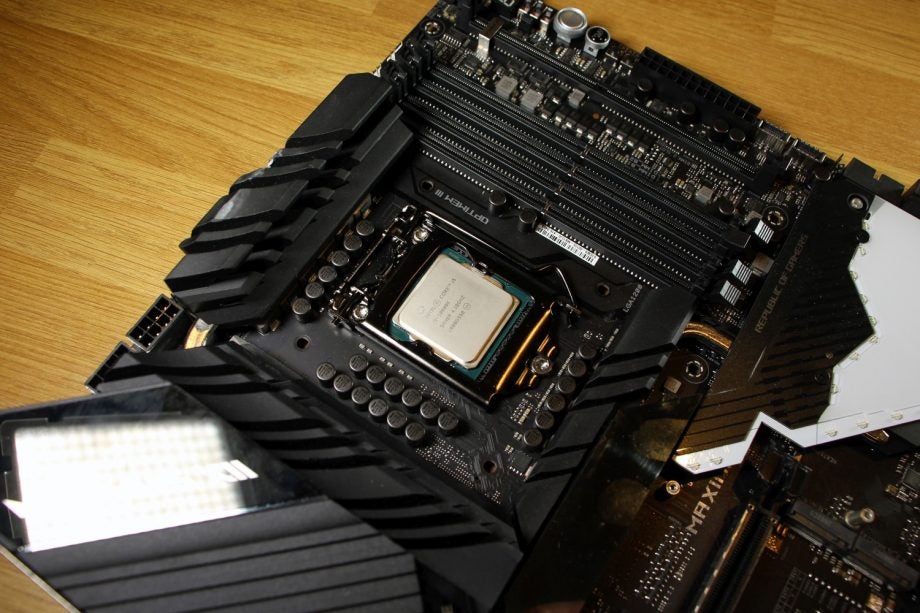
Verdict
Intel’s more modest Comet Lake arrival is impressive in several key areas, with AMD-beating single-threaded performance and gaming pace that virtually matches more expensive chips. If you’re building a mainstream PC or a mid-range gaming rig, it’s the chip to buy. However, AMD’s parts remain better if you’re on a budget or building a mid-market machine specifically for work.
Pros
- Impressive single-threaded performance
- Consistently fast in games
- Includes Hyper-Threading
- One of the more affordable gaming chips
Cons
- Poor multi-threaded performance
- Relatively expensive ecosystem
- No native PCIe 4.0 or PCIe 5.0 support
Key specifications
- Review Price: £275
- 4.1GHz base clock
- 4.8GHz boost clock
- 6 cores, 12 threads
- 14nm manufacturing process
- Intel Z490 chipset
- PCIe Gen 3 support
The Intel Core i5-10600K is not the flagship from the blue team’s 10th Gen of desktop CPUs, but this chip will almost certainly be one of the best-selling.
It’s cheaper, for starters, and its specification is more suited to mainstream work and gaming. This mid-range chip costs £275, which is certainly more palatable than the i9-10900K – that part arrived at £530.
However, Intel’s latest CPU squares up against the AMD Ryzen 5 3600X, which offers a similar specification for £210.
Intel Core i5-10600K – Technology, specifications and chipset
Intel’s latest range of CPUs doesn’t use a new underlying architecture – in fact, these Comet Lake chips are based on Skylake, which has been around since 2015.
The lack of development on that side of things means that Intel has turned to other departments to deliver improvements.
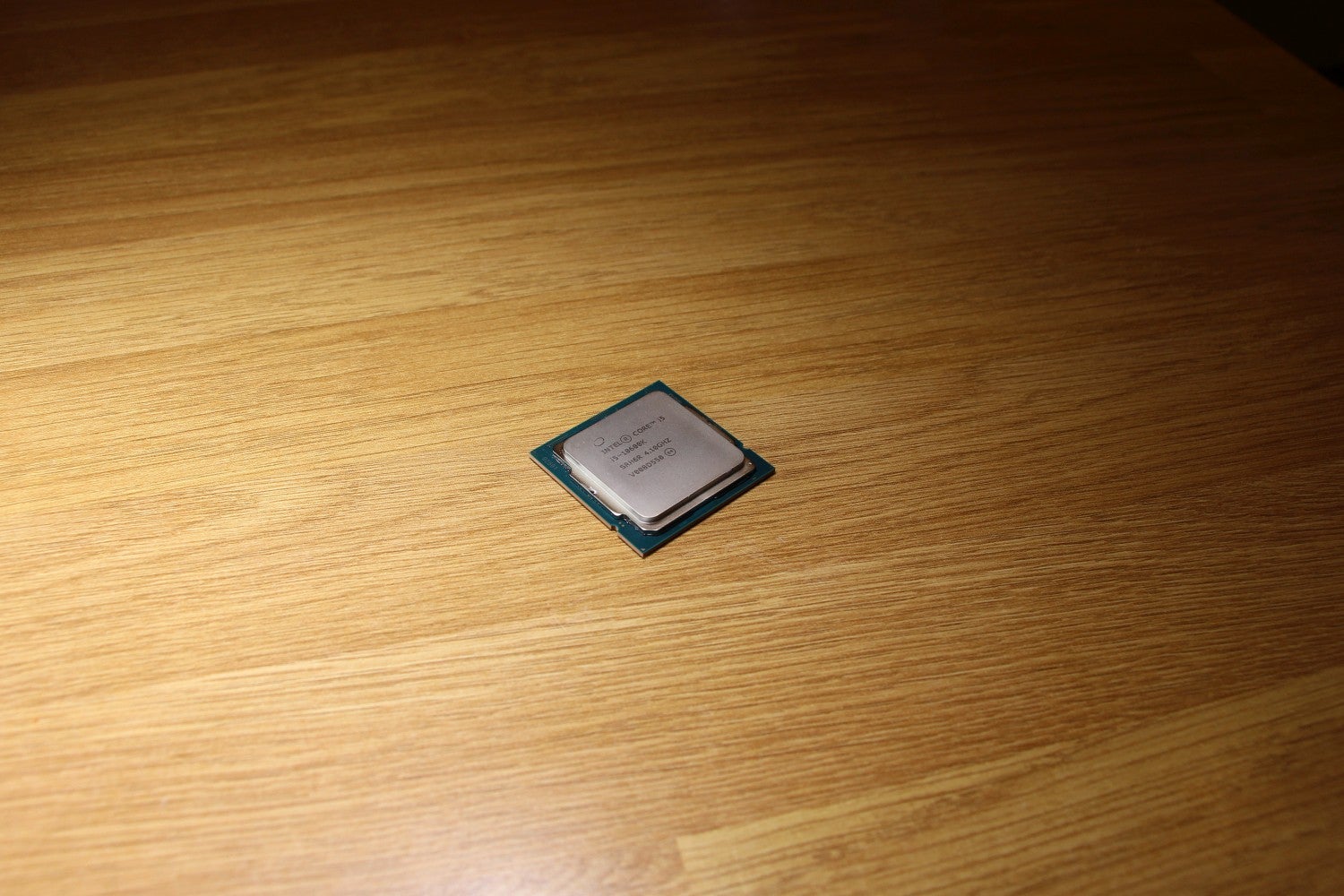
The i5-10600K, for instance, retains the six cores of the preceding i5-9600K, but this new chip has been given Hyper-Threading – so it can address twice as many threads.
The clock speeds have accelerated, too. The old part ran with base and boost clocks of 3.7GHz and 4.6GHz, but this new chip is improved to 4.1GHz and 4.8GHz – a solid jump.
Those gains mean Intel has had to do work on the thermal side – the i5-10600K has a TDP of 125W, which is thirty Watts more than its predecessor. In order to combat this, Intel has made the die thinner, added thicker copper heat-spreaders and used a better thermal compound. Intel hasn’t yet confirmed if these particular features will make their way to CPUs without the K-series branding.
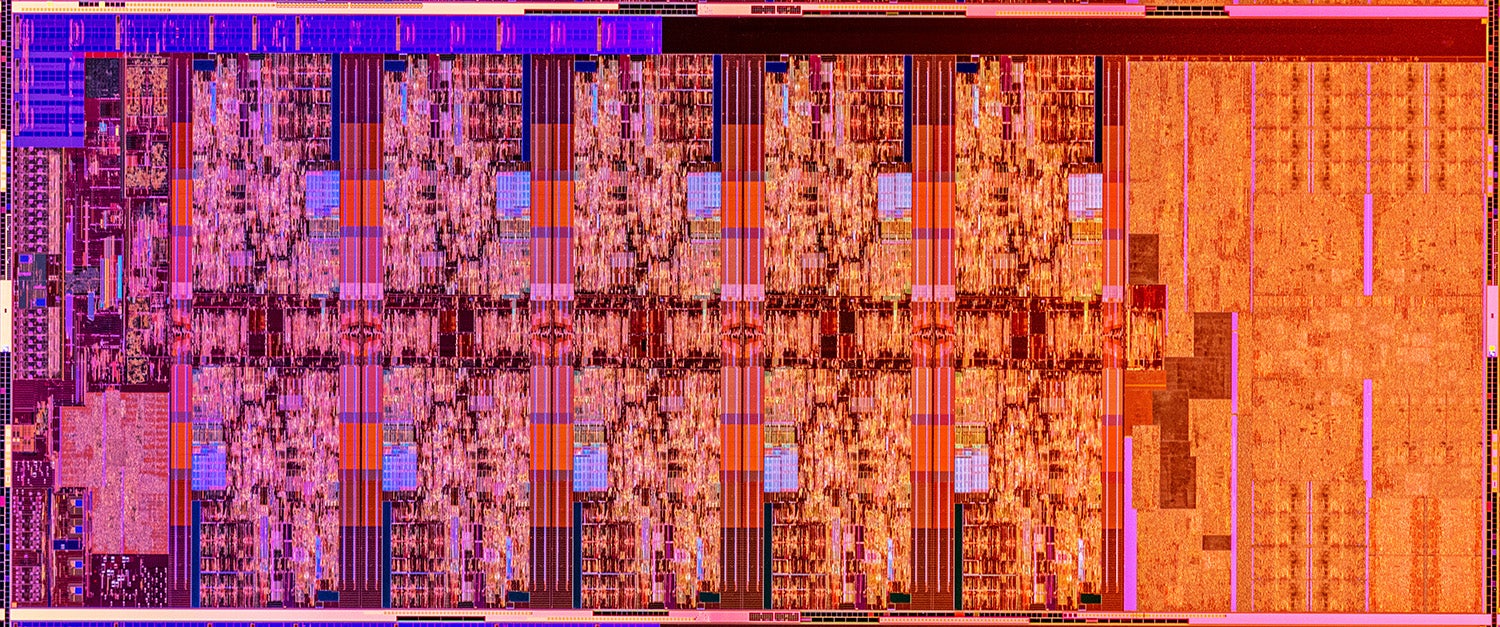
That K-series branding does mean you get more overclocking control with this new chip – on K-series models like the i5-10600K you can now disable Hyper-Threading on a per-core basis and you get more control over voltages and frequencies. For fine-tuning your overclocks, that’s a boon.
The Core i5-10600K doesn’t have high-end new features like Turbo Boost 3.0 Max or Thermal Velocity Boost – those are reserved for high-end Core i9 chips like the flagship i9-10900K. Instead, the Core i5-10600K relies on the usual Turbo Boost 2.0.
Related: Best Gaming Mouse 2020
Intel Core i5-10600K– Pricing, ecosystem and competition
Intel’s new CPUs use a new socket called LGA 1200, and it also means a new chipset called Z490 – plus a new range of motherboards.
The Z490 is virtually identical to the existing Z390 design in most areas, including PCI lanes, USB 3.1 ports and both SATA and M.2 support. The biggest change comes in networking – Comet Lake and the Z490 chipset now support WiFi 6 and 2.5Gbps Ethernet.
Intel hasn’t chosen to make the move to PCI-Express 4.0 with its new chipset – Z490 is still stuck using PCI-Express 3.0. That protocol is fast enough for any modern graphics card and the vast majority of SSDs, but AMD has already moved on to PCI-Express 4.0 – and you can already buy faster SSDs that use the new standard if you’re that fussed about storage speed.
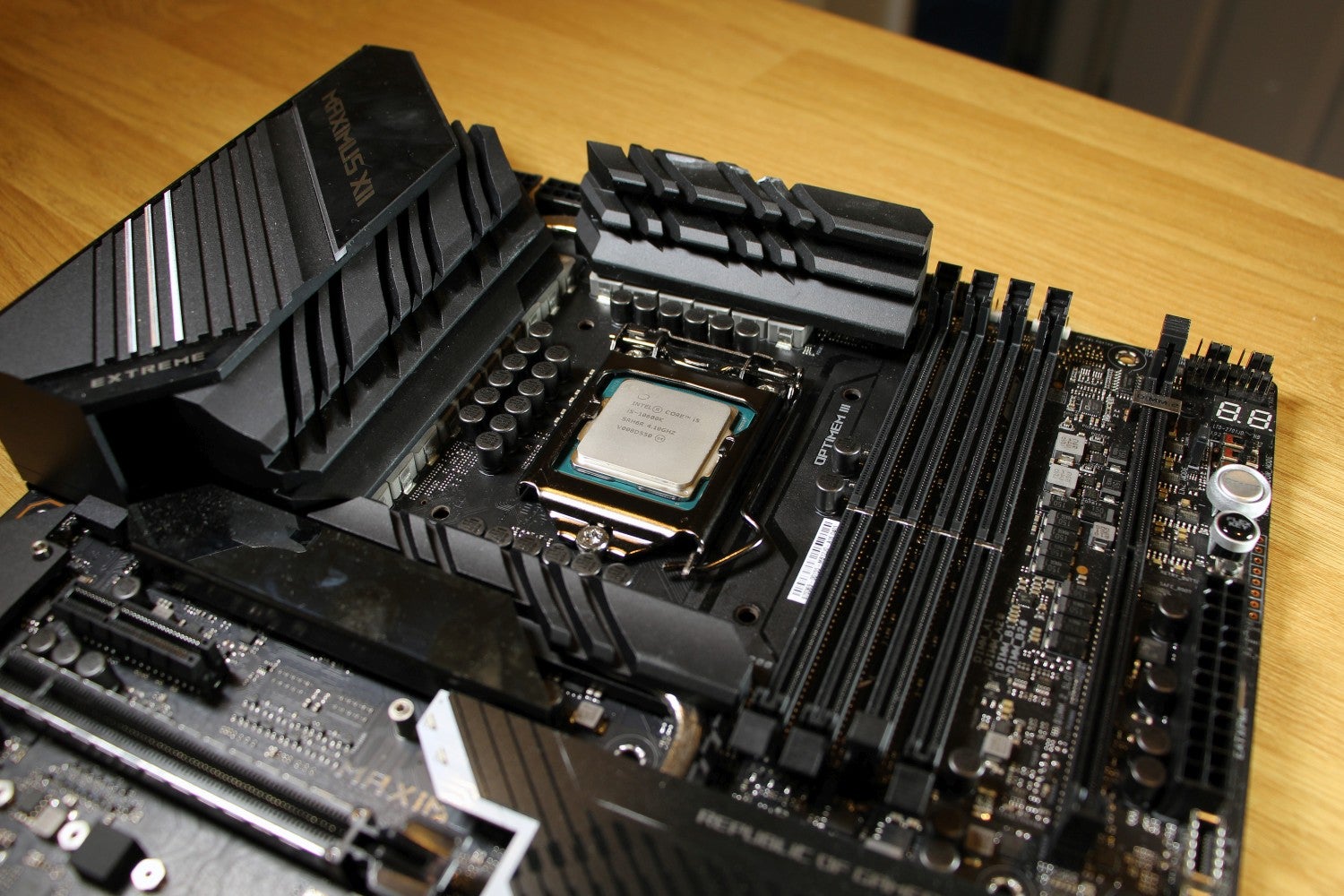
Some motherboard manufacturers have already taken this matter into their own hands by adding PCI-Express 4.0 support to Z490 boards. That bodes well for the future if it works properly – but it’s a risk. While it’s extremely likely Intel will introduce PCI-Express 4.0 support with new CPUs and chipsets, there’s no guarantee they’ll work smoothly with these boards.
Right now, only Z490 motherboards are available with these new chips, and they start at £130. Depending on the rig you’re building, that might be a price you’re willing to pay, but if you’re trying to save money, then it’s worth waiting a couple of weeks for more affordable boards that use mainstream chipsets like B460 and H460.
Happily, you may be able to save a bit of money on cooling – the new LGA 1200 socket is the same size as the LGA 1151 socket, so existing hardware will still work. Annoyingly, though, Intel isn’t including a stock cooler with Comet Lake chips, so you may well have to spend more there.
This is an area where AMD is better – the firm includes basic coolers with its CPUs, and its reliance on the existing AM4 socket means its CPUs remain compatible with a wider, cheaper range of motherboards.
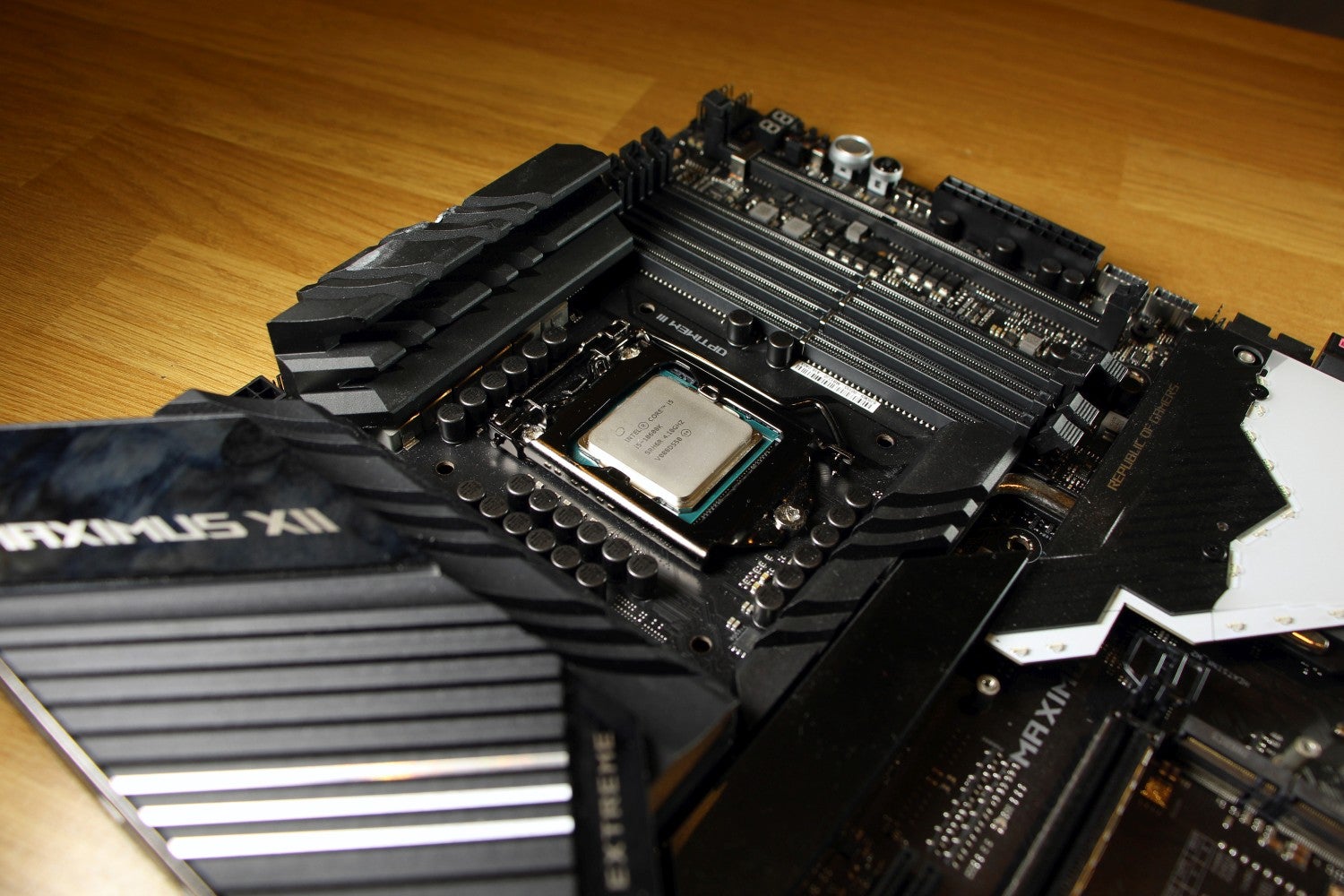
The rival Ryzen 5 3600X is cheaper at the checkout, too: it costs just £210. For that cash, you get a six-core part that supports twelve threads, just like the i5-10600K. The AMD part runs at base and boost speeds of 3.8GHz and 4.4GHz, so it’s not quite as quick as Intel in this regard.
Value-conscious consumers may also want to bear in mind the Ryzen 5 3600, which has reduced speeds of 3.6GHz and 4.2GHz and lesser Turbo abilities, but still has six cores alongside a price of just £180.
Related: Best Gaming Monitor 2020
Intel Core i5-10600K – Test setup
In order to ensure a fair test of the Intel Core i5-10600K, we’ve kept our rig as consistent as possible. This is the specification:
- Motherboard: Asus ROG Maximus XII Extreme
- GPU: Nvidia GeForce RTX 2080 Ti
- Cooler: Corsair Hydro Series H150i Pro RGB 360mm liquid cooler
- PSU: Fractal Design Essence 600W
- SSD: Seagate Barracuda 510 500GB
- OS: Windows 10 Pro 64-bit
The benchmark software is also important. We’ve picked Geekbench, Cinebench and PC Mark 10 – benchmarks that will test for work tasks, day-to-day computing and mainstream office applications.
For gaming, we’ve picked Shadow of the Tomb Raider, Ghost Recon: Wildlands and The Division 2 – modern, tough titles that will make big demands of hardware. We’ve picked Dirt Rally to represent a less-intensive title as well Civilization 6, which has a dedicated CPU test.
Games were tested at 1080p, 1440p and 4K and at their highest graphical settings. The exception here is Civilization 6 – its AI test has been run at 4K.
Also bear in mind that changing the CPU isn’t the only thing that will have an effect on gaming performance – driver updates make a significant difference too.
Intel Core i5-10600K – Results
Cinebench R15
In Cinebench’s single-core benchmark, the i5-10600K delivered a result of 203cb. That’s reasonable: around six points better than the preceding i5-9600K, two or three points ahead of the AMD Ryzen 5 3600X and about fifteen points beyond the cheaper Ryzen 5 3600.
Intel’s single-core lead vanished in the multi-core benchmark. The i5-10600K scored 1,530 in this benchmark, but the Ryzen 5 3600X scored around 1,6520 points – and even the Ryzen 5 3600 was around twenty points quicker. This is not surprising: AMD’s Zen chips have traditionally been a little better than Intel’s recent efforts in multi-threaded scenarios, and these parts all have the same number of multi-threaded cores.
The i5-10600K did deliver a 50% improvement over its predecessor, which is handily explained by the newer chip including Hyper-Threading.
Geekbench 4
This, again, is another area where Intel’s single-threaded advantage disappeared in multi-core tests. In Geekbench 4’s single-core test the new Intel CPU scored 5,683, which is great – only around 400 points behind the expensive Core i9-10900K. It’s about 300 points beyond the Ryzen 5 3600X and further ahead of the Ryzen 5 3600, too.
The Core i5-10600K’s multi-threaded result of 24,714 is not bad at all – certainly good enough to handle multi-tasking, loads of browser windows and some pretty intensive photo-editing. However, AMD’s Ryzen 5 3600X was around 1,500 points better, while the Ryzen 5 3600 was almost able to match Intel’s pricier part.
PC Mark 10
PC Mark 10’s Extended benchmark includes three tests. The Essentials benchmark covers web-browsing and low-end computing tasks, and the Productivity module handles Office applications. The Digital Content Creation module adds photo-editing, video work and encoding to the mix – areas where multi-core performance is more important.
The i5-10600K performed extremely well here. Its Essentials and Productivity scores were only around 500 points short of the i9-10600K. Its lack of cores saw it fall behind by around 2,000 points in the Digital Content Creation test, but that’s to be expected.
The Core i5 chip does fall down a little when it comes to handling tougher work applications, but it’s clearly very capable when it comes to day-to-day tasks.
Shadow of the Tomb Raider
In this tough game, the Core i5-10600K actually ran a frame faster than the i9-10900K, albeit at the lesser 1080p resolution. The cheaper Intel chip performed well elsewhere: it matched the test rig with the i9-10900K when it came to 1440p and 4K playback.
That’s an impressive set of results – at 4K this cheaper Core i5 part easily outpaced the AMD Ryzen 9 3900X and the AMD Ryzen 7 3700X, both of which are more expensive and with more cores, and it was able to beat older Intel chips once Ray Tracing was activated.
Ghost Recon Wildlands
Very little is lost when comparing the Core i5 chip to the Core i9-10900K, which is twice as expensive – at most, the cheaper Intel part only lost a frame when compared with its pricier stablemate.
That bodes well for using the i5-10600K in a gaming rig – you’re not going to lose much speed.
The Division 2
In this game, the Core i5 chip fell behind the pricier Intel chip, albeit by slim margins. At 1080p the Core i5 part helped our test rig to a score of 120fps, which was four frames behind the i9-10900K.
Happily, the Core i5 chip matched the Core i9 PC in the 1440p test, and its 50fps result at 4K was only one frame behind. You’re clearly not losing out on much performance when comparing Intel parts.
The Core i5 chip does fall behind when compared to AMD’s chips, though, which are always faster at 1440p and 4K – indeed, the game’s performance graphs show that frame rate suffers when more CPU power is required, so this is clearly a minor weak spot for Intel.
Dirt Rally
The Core i5 chip proved to be a superb performer in this older title. At 1080p and 1440p it was miles ahead of the Core i9-10900K – up to 50fps in some cases. While it’s not an exact science, comparing older games with high frame rates, it does suggest that this Core i5 part will have no problem handling these older and easier titles with aplomb.
The i5-10600K delivered an average of 132fps at 4K, here, which was nine frames ahead of the pricier Core i9-10900K chip – and better than AMD’s rival parts, too. For mainstream gaming, there’s clearly a huge amount of pace here.
Civilization 6
These two tests are both areas where the Core i5 couldn’t match up to the pure CPU power delivered by the Core i9 part.
In Civilization 6, for instance, the Core i5 part handled AI tasks with an average time of 6.56s. That’s better than every old chip from Intel and AMD, but it’s still a little slower than the i9-10900K.
And, in 3D Mark Fire Strike, the Core i5-10600K helped our rig to a reasonable score of 12,184 – but the PC with the Core i9-10900K on-board was around 1,500 points better. While that extra theoretical pace won’t always translate to speed in games, it does prove that PCs with the Core i9 part have more pure graphics power.
Related: Best PC Games 2020
Intel Core i5-10600K – Power consumption and heat
The Core i5’s higher speeds and move to Hyper-Threading mean that this chip isn’t particularly frugal. While the Core i5’s idle power draw of 69W is fine, during Cinebench, it peaked at 223W – higher than most Ryzen parts also more demanding than last year’s Core i5 chips. During a stress-test, it topped out at 310W, which is a significant power draw for a mid-range chip.
We had no issues with temperatures, at least – with the Core i5-10600K sat beneath our Corsair Hydro H150i, it peaked at 74°C during a stress-test. That’s no problem at all.
Should you buy the Intel Core i5-10600K?
The Intel Core i5-10600K is arguably a better processor than the flagship i9-10900K, despite the latter chip receiving all of the attention.
Comet Lake’s improved clock speeds see this chip outpace AMD in single-threaded applications, which makes it a better option for day-to-day computing. In games, it’s almost on a par with a Core i9 chip when it comes to real-world speed, and it’s faster than AMD’s parts in most tests.
The i5-10600K delivers a huge improvement in multi-threaded workloads when compared to its predecessor thanks to Hyper-Threading, but it still can’t match AMD’s Ryzen 5 3600X here – that chip is still better when it comes to content creation and other tough software.
The Core i5 chip is also not particularly frugal, and the new socket means that buying into this ecosystem will be a little more expensive than AMD for many people.
Intel’s latest Core i5 chip is not perfect, but it’s a better option for mainstream computing and gaming than AMD’s equivalent chips, and so this is the chip I’d recommend for building a mid-range rig for those applications. With the i5-10600K on the scene, it’s only worth sticking with AMD if you need a CPU for content-creation or work – or if you want to save some cash.


